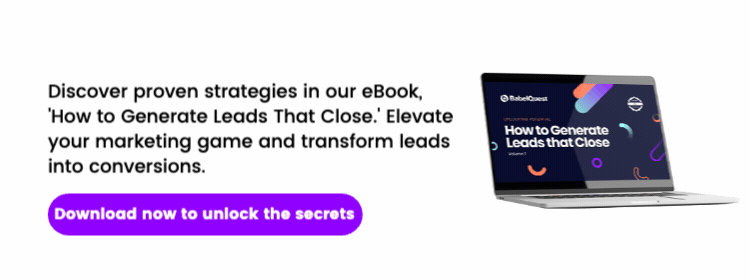Globally recognised growth platform HubSpot makes it easier than ever for you to A/B test your inbound marketing, improving your results and helping to you offer the best experience with every new campaign.
Two truths exist in the digital marketing world: we want more traffic and we want more conversions.
That said, a seemingly simple goal like improving conversion rates actually involves a great deal of time, resources, and budget. Opting to go down the inbound marketing route should typically involve 100 hours of resourcing per month in order to spin the flywheel and build momentum across your business operations.
With so much core activity to complete month on month, a question exists as to how you should find the time to test and iterate your marketing. And will it really make that much of a difference?
Need help with HubSpot? Discover how our inbound marketing consultants could help you get more value from your platform.
A/B testing in action: 92% of HubSpot's traffic came from historic posts
There are so many examples of this out there, but one which I found particularly interesting was HubSpot’s historical optimisation project. They wrote a lengthy article explaining the process but in a nutshell, on reviewing their blog they realised that 92% of their monthly blog leads were coming from ‘old’ posts. Even more staggering was that 46% of these leads came from just 30 individual posts. When you take into account that at the time, HubSpot was publishing around 200 new posts every month and had accumulated nearly 6,000 posts in total, this revelation is significant.
By taking time to step back and look at the figures, HubSpot identified areas of focus, like improving the conversion point on high-traffic, low converting posts, and increasing traffic to posts which were already converting well.
"Incorporating this activity into their editorial calendar ensured were still able to create new, timely articles, while also improving the overall performance of historic posts."
The important thing when it comes to testing and iterating your marketing for improvement is getting clear visibility of your efforts so you can actually see their performance. HubSpot gives us that visibility alongside easy to use tools which make it easy to make quick changes and iterations to get the highest results from your campaigns.
If you’re a HubSpot user, there's really no reason why you shouldn’t be testing. Let’s take a look at nine key tips you should be looking at to get started today:
How to A/B test your inbound marketing with HubSpot

1. Don’t confuse the results: keep tests to a minimum
Now that you’re reading all about A/B testing you’re probably starting to think about all the different things you would like to test in your own marketing. Great! But try not to get too carried away. Running too many tests at once on interlinking elements could actually end up giving you more of a headache, and you'll quickly lose track of what you're doing.
By interlinking elements, I mean a CTA that leads to a landing page, for example. You wouldn’t want to test the wording of the CTA at the same time as testing which headline works better on the landing page, as adjusting multiple elements of the page means you wouldn’t know which one actually helped you to boost your conversions.
TAKEAWAY #1: By all means run multiple tests at once in different areas, but always make sure they don’t end up clashing in the user journey.
2. If you want to make an impact quickly, think bigger
Whilst you should definitely be testing small things like button colour or background shade, you should also consider making your entire landing page, call-to-action, or email a variable in itself.
This can be a great option for marketers who want to see improvements very quickly, particularly if you are considering a homepage re-design for example. It also means you can switch back to the control version if things go in the wrong direction completely. The drawback? When opting for this approach you should then take the time to try and understand what it was specifically, which made the difference.
TAKEAWAY #2: Instead of testing individual elements, such as headlines and images, design two completely different versions and test them against each other.
3. Don't forget to test minor changes
Although significant changes can be lucrative to test, the small details are often just as important. Even a simple change like switching the image on your landing page or the colour of a CTA can drive substantial improvements. In fact, these sorts of changes are usually much easier to measure than the bigger ones.
TAKEAWAY #3: Remember to test smaller changes as well as the larger, more readily apparent ones.
4. Measure as far down the funnel as you can
Your A/B test might have a positive impact on your click-through or conversion rate, but how about your sales numbers? You may discover that an email with fewer clicks or a landing page with few conversions actually produced more sales. Your ultimate goal is that your leads go on to become customers, so make sure that you are checking that your quality doesn’t decrease with an increase in numbers.
TAKEAWAY #4: Track and measure the impact of your A/B tests on the sales performance (both the number of deals closed and the quality of the leads reaching sales).
5. Make sure that you have a test control
In any experiment, you need to keep an original version of the element you’re testing, setting up this unaltered version as your ‘control’. From there, build your variation and test it against your control version. An example of this might be if you currently have a red button on your CTA. Create an A/B test to see if a green button will make any difference to the click throughs, but keep that red button as the control.
TAKEAWAY #5: Maintain a control for every A/B test you run.
6. Decide what you want to test
There are so many things that you can be testing. After all, you could be testing CTAs, landing pages and forms on your website even before you get to the emails and workflows which run behind the scenes. You certainly don’t have to do it all now.
TAKEAWAY #6: Test the things that are going to have the biggest impact first, and then test the others in order of greatest to least importance.
7. Split your sample group randomly
In order to achieve conclusive results, you will need to test with two or more audiences that are equal. The good news is that if you’re using HubSpot to A/B test a landing page or CTA, it will automatically split visitors randomly between the two. With an email, you can set the percentage you would like to test before sending the winning version to the rest of the recipients. Ideally something along the line of 15% for version A, 15% for version B and then 70% to receive the winning version. Remember, if you have a list of less than 1,000 you can only split 50/50.
TAKEAWAY #7: Randomised sample groups reduce the chance of bias results, improving the accuracy of your A/B tests.
8. Keep your test timings consistent
Timing plays a significant role in your marketing campaign’s results, be it time of day, day of the week, or month of the year. Changing these between tests introduces a new variable into the mix — time — which can affect the validity of your results.
That said, this isn’t always possible, particularly as you cannot currently A/B test web pages in HubSpot. If you do want to test these, and don’t want to use an external tool like Optimizely, then you could still run a version for a month and make an iteration to it to then test for another month, but be aware that your results may not be 100% accurate.
TAKEAWAY #8: To avoid skewing your results, make sure you test competing versions at the same time.
9. Decide on the necessary significance of your results
When you are looking at the results of a test, you need to make sure that the difference in conversion rate between your variation and the control is not due to random chance and that it has clear statistical significance if you want to draw objective conclusions and actionable insights from it.
Ultimately, this comes down to how risk averse you are, but the size of your audience is also a big factor. If you are working with a relatively small audience size, you need to decide what your point of statistical significance will be with a higher level of risk, as you will have less data to work from.
TAKEAWAY #9: Always take the necessary steps to consider and, if necessary, cross reference your results before actioning insights off the back of them.
A/B testing strategies
We all know marketers want to get more leads, but how can we do that? Now you understand why testing can be so important, and we’ve been through best practices, what are some of the things you could be testing?
Increasing conversions with landing pages
A key element to a landing page is a form, but rather than sticking to the same set of fields you should be testing them to see if it improves your conversion rate.
Here are a few things you could consider testing:
- Number of form fields
- Type of field (does a drop down work better than a radio select?)
- Do field labels work better above, next to or inside the field?
- Colour and copy of the submit button
- Does the wording of a question impact the quality of the answer?
Always consider what you really need information-wise from that form submission. If it’s a consultation request, you may need to ask for a telephone number as well as email but could you leave off industry and find it yourself? Lots of information is freely available online so as long as you have the crucial information covered, just make sure that you are making it as easy for the buyer to fill out as possible.
Remember to look at the whole page, not just the standard things which are always written about in A/B testing articles. Think outside the box.
The fastest way to achieve drastic results and produce a landing page that drives lots of conversions is to test the entire page. Here are a few examples of things you could look at testing on your landing pages:
- Formatting and style of the copy
- Plain paragraphs vs. bullet points
- A longer block of text vs. a shorter block of text.
- Form placement
- Different images (does an image of the ebook cover work better than a snippet of the ebook itself?)
Increasing conversions with email
Here are a few ideas for testing your emails in order to improve engagement:
- The wording of your call to action
- Email Sender - try sending the email from a real person in your business instead of a generic hello@ email address. Equally, you might want to test who that ‘real person is’, whether it’s a thought-leader in your business or the person the contact has been speaking to in sales
- Play around with the length of the subject line or add personalisation by using the contact’s name or company name
- Try using a plain text email vs. a designed HTML one
- Stagger your email delivery for a month with Seventh Sense and compare it against bulk sends to see if it impacts deliverability and open rate
With so many things to test, consider a priority order and work through them from there to try and get the highest impact tests in first.
Increasing conversions on your website
OK, so clearly there are many things you could be testing on your website, but let’s look at a few of the ones you should be trying first:
- Test different wording and text sizes for your homepage headline to really grab your reader’s attention and gets them to keep reading
- Where you place your call to actions can have a huge effect on how well it converts so test a few different positions
- Highlighting a CTA next to an image? Try out whether changing that image makes a difference to the click throughs
- Does the copy length and style impact the conversions of the page?
- Try testing different offers to see which works better on a page
Since A/B testing is not currently possible in HubSpot website pages, you have to have a plan. Either opt for one of the external tools which allow you to do it, or make a change and leave it for a set amount of time to see how it impacts your chosen metrics. In the case of that latter option, always have baseline data prior to testing so that you are able to measure the difference.
Increasing the conversions of your CTAs
There are of course the standard, much talked about ways to test your CTAs, including button colour and copy, but there are so many other things out there too.
How about testing the format of your call to action, looking at whether a text link works better than a button or image or testing the size to see if it jumps out more?
Position is also something which you may be overlooking. We are all in the habit of putting CTAs at the end of our blog posts, but with a narrowing attention span, how many people actually read to the bottom, or end up clicking through if they do get there?
Much like we all started overlooking overly obvious ads a few years ago, it seems that people are now developing an overall ‘banner blindness’ which extends to CTAs. Trying out a text-based CTA with relevant anchor text in the body of a blog post could drastically improve your click throughs.
A/B testing examples
Here are some of the tests which we are running at the moment. We’re planning on writing about the results as they become definitive so stay tuned.
1. Does an embedded meeting link perform better than a form on a landing page?
%20-%20BabelQuest%20Consultation%20Form%20Test.png?width=600&name=Resource%20(testing)%20-%20BabelQuest%20Consultation%20Form%20Test.png)
2. If you add a number of subscribers next to a subscription box, does it improve conversions?
%20-%20CWL%20Subscribers%20box.png?width=600&name=Resource%20(testing)%20-%20CWL%20Subscribers%20box.png)
A/B testing example from CWL Systems
3. Does implementing live chat on a website improve engagement, almost like a pre-conversion?
%20-%20LNP%20China%20Live%20Chat%20Box.png?width=600&name=Resource%20(testing)%20-%20LNP%20China%20Live%20Chat%20Box.png)
A/B testing example from LNP China
4. Which converts better on a landing page, a form on the left or the right? We've actually written a post about this one already.
%20-%20pricing.png?width=600&name=Resource%20(testing)%20-%20pricing.png)
Finally, I asked some of my colleagues and contacts on what best practice they would advise when it comes to testing.
A/B testing tutorials for marketers, from marketers
"Have a clear objective for the current quarter. Is it more views, more contacts, or better conversion of views to contacts for organic traffic? Keep focused on that objective and don’t get distracted by all the other things you could be doing. Only look at the data for the area you are trying to improve, otherwise you can be totally overwhelmed with data." Emma Harris, Triaster
"Don't be afraid to try things out. No matter how whacky your ideas are, you might uncover a goldmine! If it doesn't work out, it's not the end of the world, at least you tried and you can always change it back." Izzy Witts, Inbound Consultant
"Commit to a test and commit to it for a few weeks. Even if a test doesn’t give you the result you want straight away, resist the urge to shift back to the control. Step away and forget about it." Dave Heywood, Independent Marketing Specialist
"Keep your metrics straightforward. There is nothing worse than trying to track every single metric and getting overwhelmed by that when just using one or two would be enough. Think carefully about what to track and focus on that. e.g. trying to improve the flow of traffic through your site with your homepage? Either pick one CTA to measure, or go for the whole CTR of the page. Trying to track every single one will just give you a headache." Gem Rugg-Gunn, HubSpot Platform Consultant, BabelQuest
So there you have it
Taking the time to look carefully at your data and test in order to make improvements can have a great effect on your final goals. Remember to take things one step at a time, prioritising tests on order of their potential impact and never be afraid of trying something out — you can always change it back again once the test is over.
Do you have HubSpot and want to be testing more? Learn how to generate leads that close and drive repeatable, scalable business growth by downloading our free ebook below.
Heading
Separated they live in Bookmarksgrove right at the coast of the famous Semantics, large language ocean and many more stuff and more more more


Becky is the Co-founder and Director of BabelQuest, an Elite-tier HubSpot Solutions Partner based in Abingdon, Oxfordshire.



.png?width=50)

.png?width=50)
.png?width=50)



































